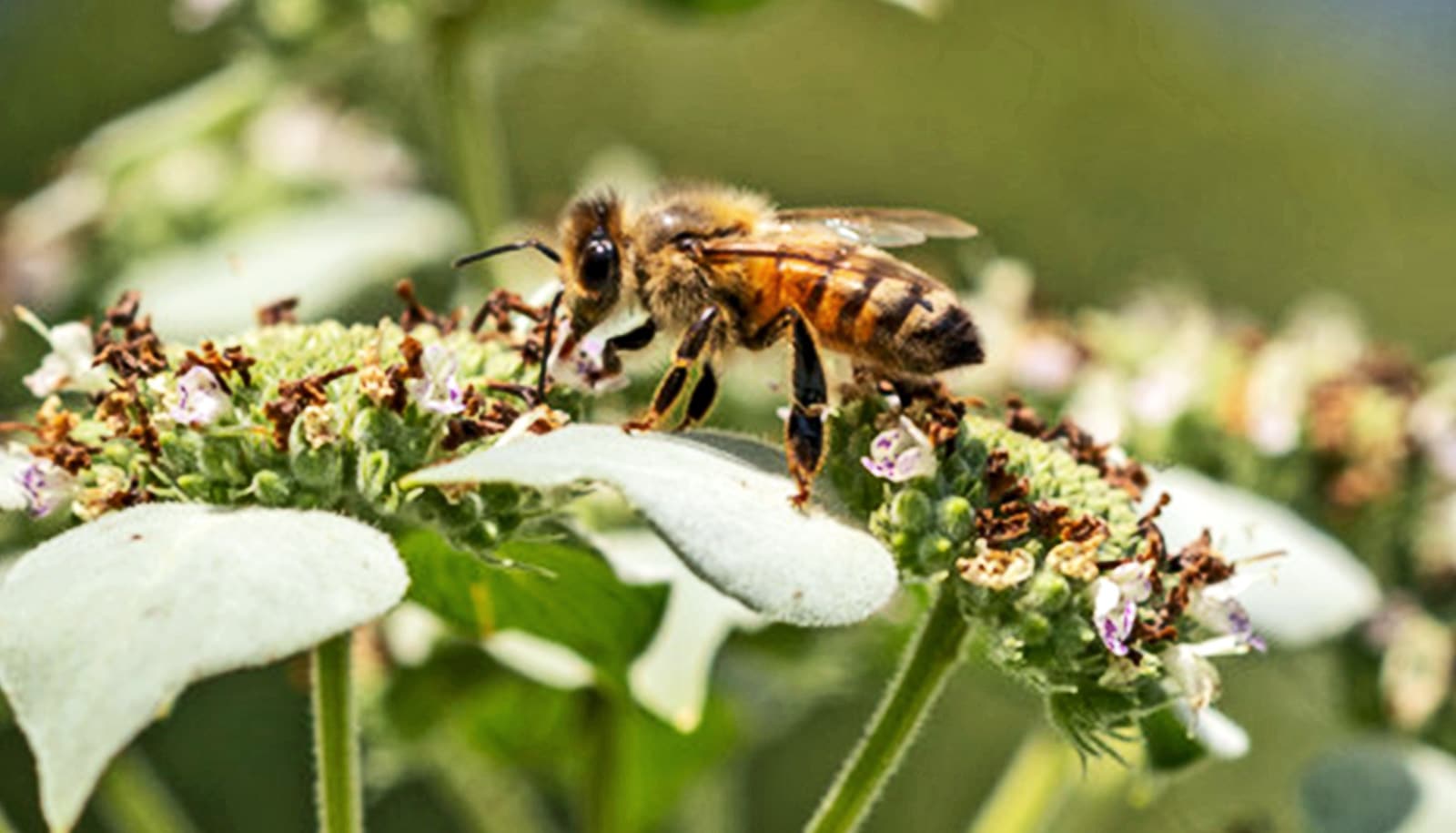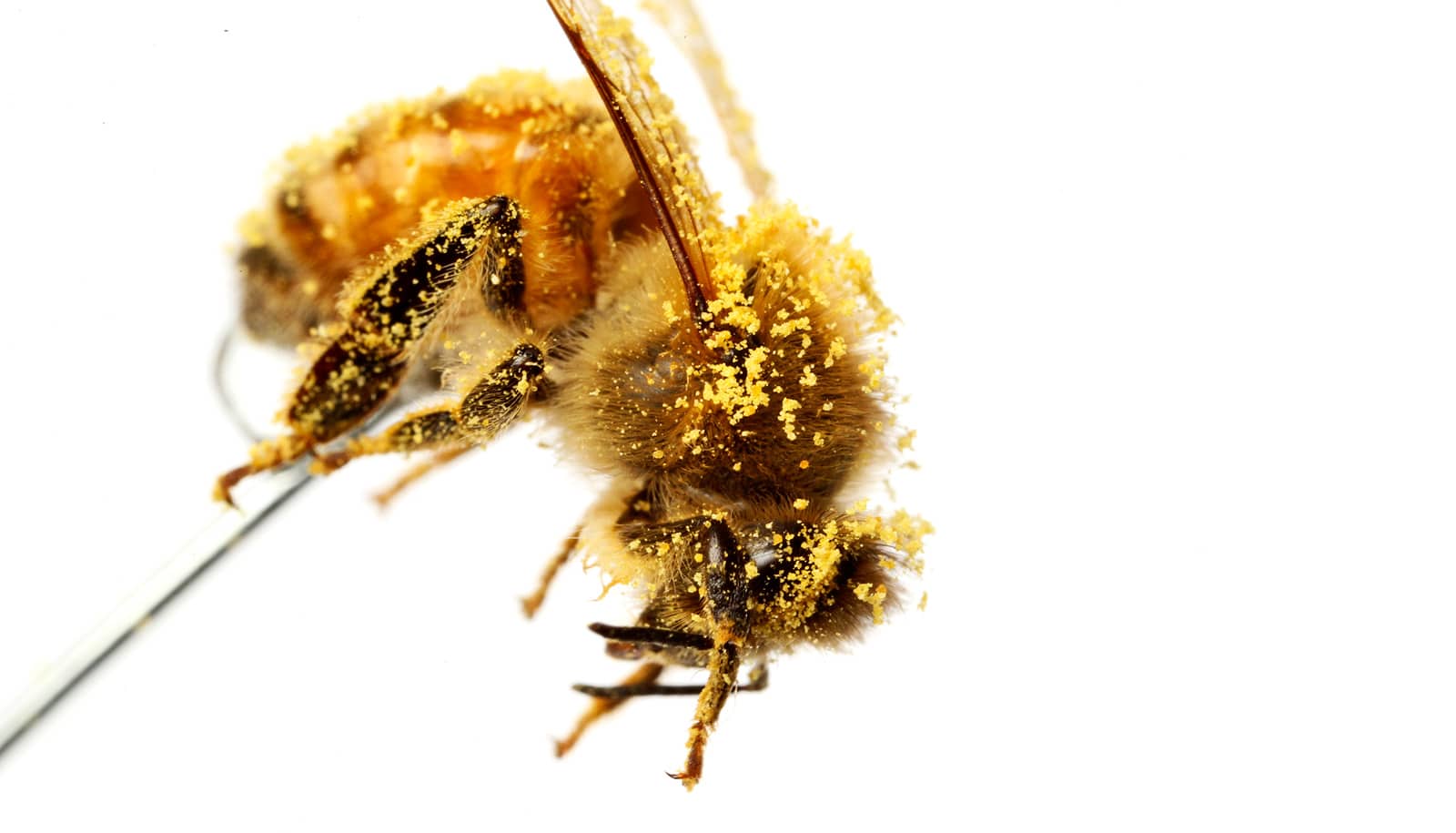Insecticides have become significantly more toxic—over 120-fold in some Midwestern states—to honey bees when ingested, according to a new study.
Rising neonicotinoid seed treatments applied to corn and soy in US agricultural landscapes during the past 20 years are the primary driver of the change, the researchers found.
The study is the first to characterize the geographic patterns of insecticide toxicity to bees and reveal specific areas of the country where experts could focus mitigation and conservation efforts.
This toxicity has increased during the same period in which researchers have documented widespread decline in populations of pollinators and other insects, says Christina Grozinger, professor of entomology and director of the Center for Pollinator Research at Penn State.
“Insecticides are important for managing insects that damage crops, but they can also affect other insect species, such as bees and other pollinators, in the surrounding landscape,” she says. “It is problematic that there is such a dramatic increase in the total insecticide toxicity at a time when there is also so much concern about declines in populations of pollinating insects, which also play a very critical role in agricultural production.”

‘Heartland’ honey bees
For the study in Scientific Reports, researchers integrated several public databases—including insecticide use data from the US Geological Survey, toxicity data from the Environmental Protection Agency, and crop acreage data from the US Department of Agriculture—to generate county-level annual estimates of honey bee “toxic load” for insecticides applied between 1997 and 2012. The team defined toxic load as the number of lethal doses to bees from all insecticides applied to cropland in each county.
The researchers generated separate estimates for contact-based toxic loads, such as when a honey bee faces a direct spray, and oral-based toxic loads, such as when a bee ingests the pollen or nectar of a recently treated plant. They generated a map of predicted insecticide toxic load at the county level.
The team found that the pounds of insecticides applied decreased in most counties from 1997 to 2012, while contact-based bee toxic load remained relatively steady.
In contrast, oral-based bee toxic load increased by nine-fold, on average, across the US. This pattern varied by region, with the greatest increase—121-fold—seen in the heartland, which the US Department of Agriculture defines as all of Iowa, Illinois, and Indiana; most of Missouri; and part of Minnesota, Ohio, Kentucky, Nebraska, and South Dakota.
The Northern Great Plains had the second highest increase at 53-fold. This region includes all of North Dakota and part of South Dakota, Nebraska, Colorado, Wyoming, Montana, and Minnesota.
“This dramatic increase in oral-based toxic load is connected to a shift toward widespread use of neonicotinoid insecticides, which are unusually toxic to bees when they are ingested,” Douglas says.
Bee toxic load
The most widely used family of insecticides in the world, neonicotinoids are commonly used as seed coatings in crops, such as corn and soybean. Growing plants take up some of the insecticide and distribute it throughout their tissues, while the rest is lost to the environment.
“Several studies have shown that these seed treatments have negligible benefits for most crops in most regions,” says Grozinger. “Unfortunately, growers often don’t have the option to purchase seeds without these treatments; they don’t have choices in how to manage their crops.”
The researchers suggest that the common method of evaluating insecticide-use trends in terms of pounds of insecticides applied does not give an accurate picture of environmental impact.
“The indicator we use—bee toxic load—can be considered as an alternative indicator in cases where impacts to bees and other nontarget insects is a concern,” Douglas says. “This is particularly relevant given that many states have recently developed ‘Pollinator Protection Plans’ to monitor and address pollinator declines. Ultimately, our work helps to identify geographic areas where in-depth risk assessment and insecticide mitigation and conservation efforts could be focused.”
“It is important to note that the calculation of bee toxic load provides information about the total toxicity of insecticides applied to a landscape,” Grozinger says. “It does not calculate how much of that insecticide actually comes in contact with bees, or how long the insecticide lasts before it is broken down. Future studies are needed to determine how toxic load associates with changes in populations of bees and other insects.”
This research is part of a larger project to investigate the various stressors affecting pollinator populations across the US. One tool researchers created within this research project is Beescape, which allows users to explore the stressors affecting bees in their own communities.
Additional coauthors are from Penn State, Dickinson College, and the University of Minnesota.
The National Science Foundation, the US Department of Agriculture’s National Institute of Food and Agriculture’s Agriculture and Food Research Initiative, the Foundation for Food and Agricultural Research, and the US Department of Agriculture’s Economic Research Service funded the work.
Source: Penn State


